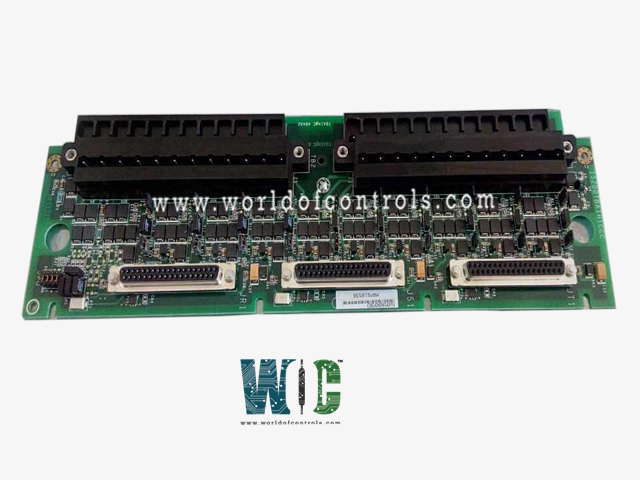
World Of Controls understands the criticality of your requirement and works towards reducing the lead time as much as possible.
IS200TBAIH1CDC - Analog Input/Output Terminal Board is available in stock which ships the same day.
IS200TBAIH1CDC - Analog Input/Output Terminal Board comes in UNUSED as well as REBUILT condition.
To avail our best deals for IS200TBAIH1CDC - Analog Input/Output Terminal Board, contact us and we will get back to you within 24 hours.
Part No.: IS200TBAIH1CDC
Manufacturer: General Electric
Country of Manufacture: United States of America (USA)
Number of channels: 12 channels
Input span, transmitters: 1-5 V dc
Temperature: -30 to 65oC
Size: 10.16 cm wide x 33.02 cm high
Product Type: Analog Input/Output Terminal board
Availability: In Stock
Series: Mark VIe
IS200TBAIH1CDC is an analog input/output terminal board developed by GE. It is a part of Mark VIe control system. The Analog Input/Output terminal board serves as a crucial component in the system, facilitating analog signal processing with its support for both inputs and outputs. With its versatile functionality and robust design features, the TBAI terminal board enhances the system's capability to handle analog signals effectively.
The WOC team is always available to help you with your Mark VIe requirements. For more information, please contact WOC.
What is IS200TBAIH1CDC?
It is an analog input/output terminal board developed by GE under the Mark VIe series.
How does the terminal board monitor output current?
The terminal board utilizes a series resistor to measure the voltage drop across it, providing an indication of the output current. This mechanism enables precise monitoring of output current levels, ensuring accurate control and diagnosis of potential issues.
What happens if either of the two outputs becomes unhealthy?
If either of the two outputs on the terminal board becomes unhealthy, the Peripheral Analog Input/Output Controller (PAIC) generates a diagnostic alarm or fault. This proactive approach to fault detection ensures prompt identification and resolution of any issues affecting output functionality.
How are cable connectors on the terminal board identified?
Each cable connector on the terminal board is equipped with its own identification (ID) device, which contains information such as the terminal board serial number, board type, revision number, and the connector location (JR, JS, JT). These ID devices serve as unique identifiers for each connector, facilitating accurate identification and configuration within the system.
What happens if a mismatch is detected during connector interrogation?
When the ID device on a cable connector is interrogated by the PAIC, any mismatch encountered, such as discrepancies in serial number, board type, or connector location, triggers a hardware incompatibility fault. This fault serves as an indication of potential configuration issues, prompting further investigation and corrective action to ensure compatibility and proper functioning within the system.